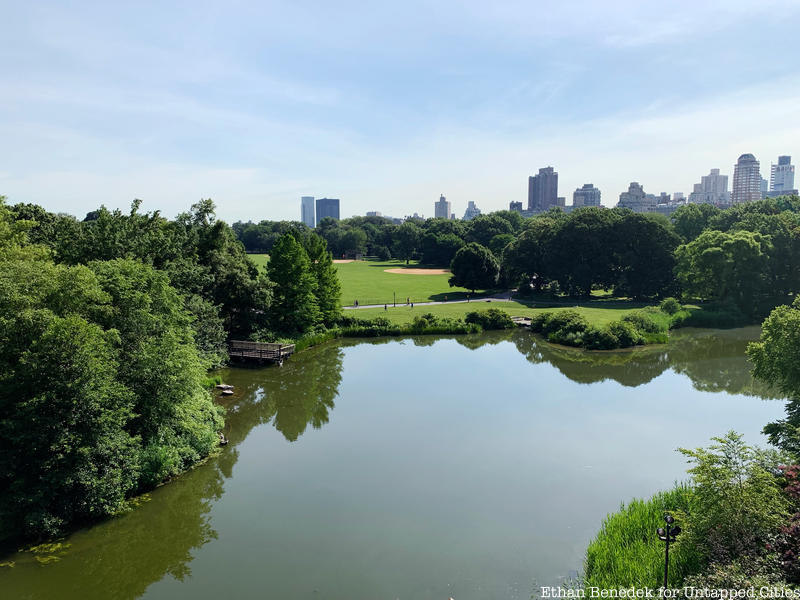5. The View from the Belvedere Has Changed

Believe it or not, the lush green of Central Park’s Great Lawn was once a large body of water, the Croton Reservoir, which was supplied by the Old Croton Aqueduct System that ran to the city up until the 1930s. Belvedere designers Olmsted and Vaux were not fans of the reservoir’s aesthetic. They thought it was too large and marred the natural curvatures of the park. So, they tried to conceal the water from public view by planting large amounts of vegetation around the edges. The only place from which they were unable to hide it completely was Belvedere Castle, because of the structure’s point of elevation overlooking the park.
Although the reservoir has long since been covered over and the aqueduct system is gone, its traces can still be seen throughout the city, especially in Central Park. Many sections of wall protruding from the park’s greenery once contained the reservoir’s waters and walls can be seen inside and around the police station on 86th Street. And while Bethesda Fountain, located next to Bethesda Park in the lower center of the park, draws large crowds on every beautiful day, few know that the fountain actually commemorates the Croton System. The angel on the fountain references the Gospel of John, in which a fountain develops healing powers when it is blessed by an angel. In the angel’s hand is a lily, representing the importance of the water’s purity.
Now, the view from Belvedere Castle is much changed. Visitors can see the Great Lawn in the distance to the North, where the Reservoir once stood, and Turtle Pond, a beautiful body of water that would surely meet Olmsted and Vaux’s standards. To the South lies the Ramble, a naturalist area of small walking paths winding around tall trees. Its groves of trees and curved shapes harmonize closely with the original vision of the park.





